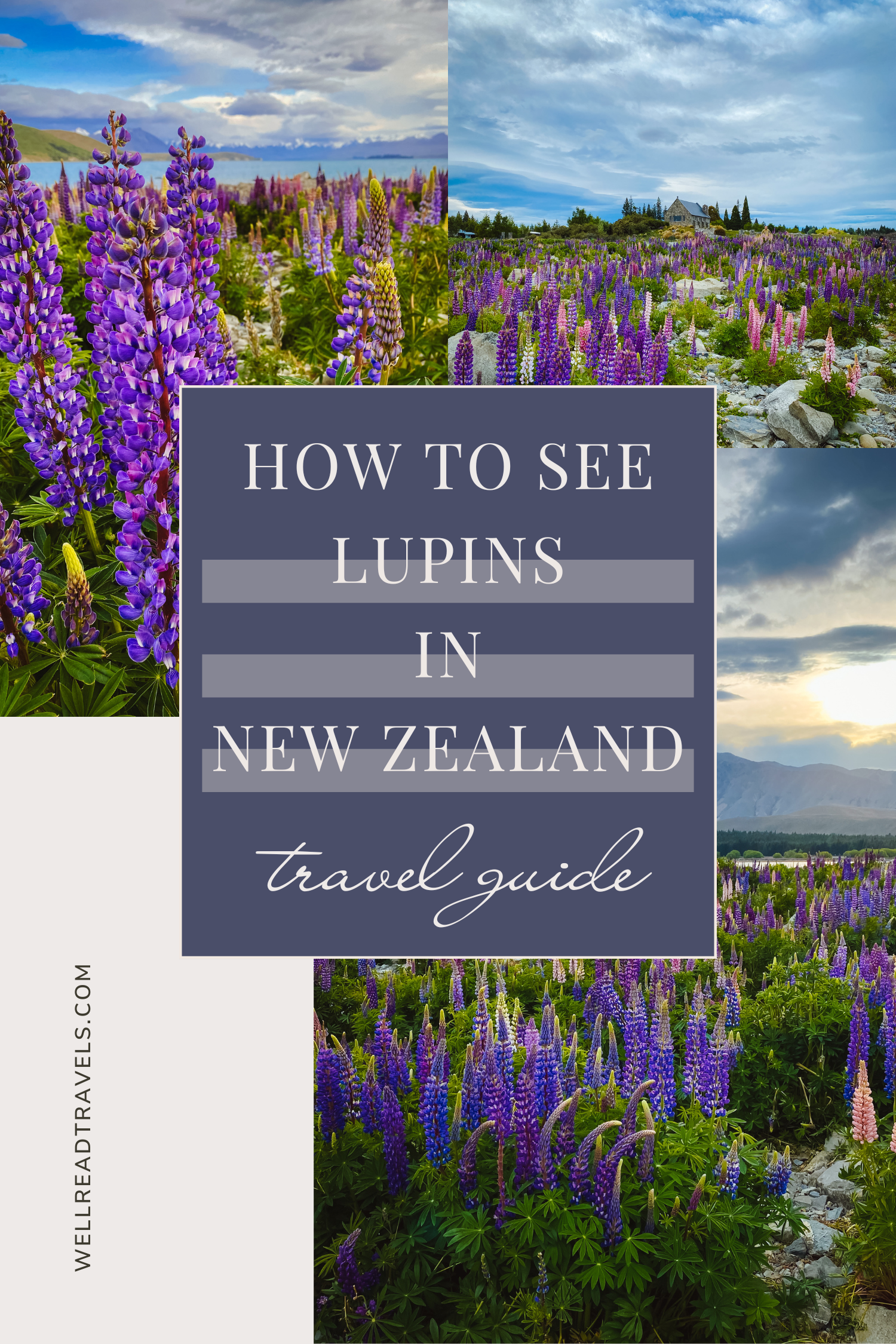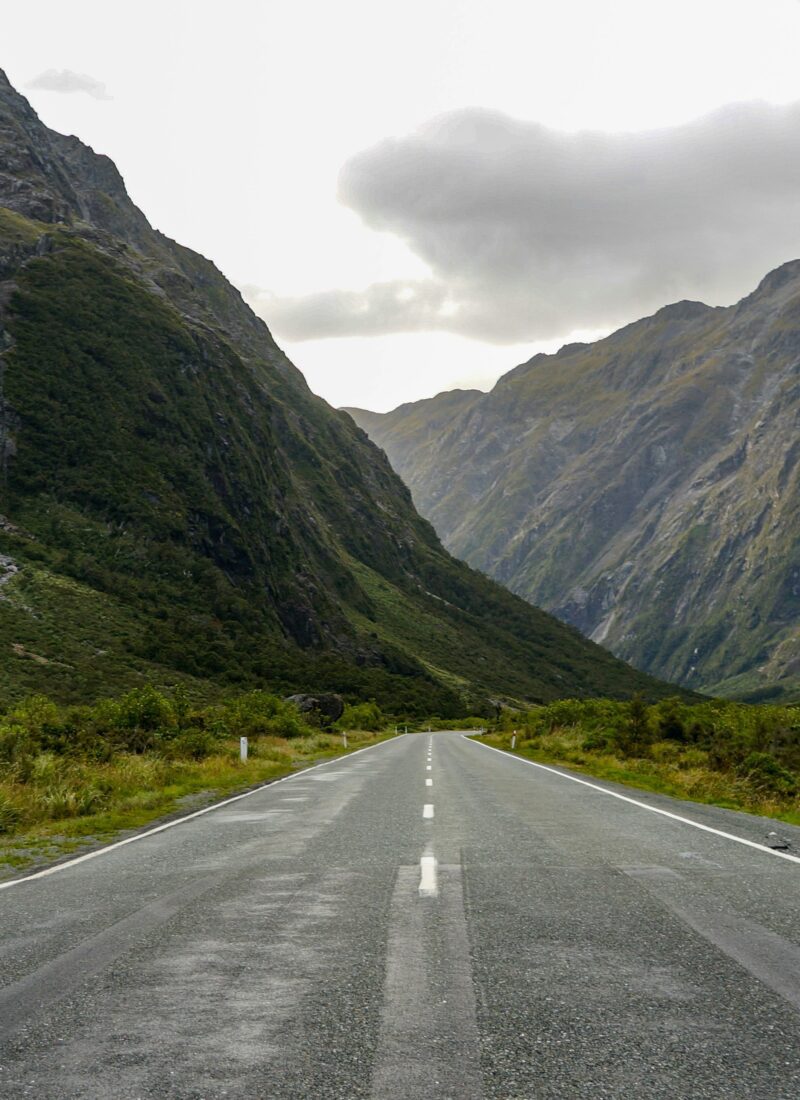
The South Island of New Zealand is truly enchanting and a must-visit location for many reasons. It’s home to countless beautiful outdoor attractions that have grown in popularity over the years after rebounding from the pandemic. One of its more colorful sights is a lovely purple flower known as a lupin. Lupins are an annual plant that bloom during certain parts of the year on the South Island of New Zealand. These long, vibrant flowers act as a stunning backdrop to an already stunning country. Witnessing them has become a bucket list item for many travelers, thanks to social media. If you’re ready to check strolling through a field of lupins in New Zealand off your bucket list, you’ve come to the right place. I created this guide and compiled all the best tips to help you see lupins in New Zealand.
This post contains affiliate links, and I may earn a small commission when you click on the links at no cost to you.
Visit During the Peak Season
The first tip for seeing lupins in New Zealand is all about timing. Lupins bloom from late November to early January, with peak bloom usually around early to mid-December. This timeline coincides with New Zealand’s late spring and early summer weather. Visiting during this window offers the best chance to see the flowers in full bloom. Lupin season in New Zealand typically ends by early to mid-January, so plan your trip accordingly!

Map Out the Best Locations
Now that you’ve booked your flight and plan to visit during the peak season, it’s time to map out the best places to see lupins in New Zealand. Lupins are predominantly found on New Zealand’s South Island, especially in the Mackenzie Basin around Lake Tekapo, Lake Pukaki, and the surrounding regions. While they can grow in other parts of New Zealand, the South Island offers the most iconic and expansive displays of these colorful blooms. I’ve included a list and a Google map below of all the best spots:
- Lake Tekapo: Lake Tekapo is easily the most well-known destination on the South Island for witnessing lupins. The lake itself has gorgeous turquoise-blue water set against a beautiful mountain backdrop. Along its rocky shores are fields of colorful lupins in varying shades of purple and pink.
- Lake Pukaki: Another popular spot to glimpse the lupins is Lake Pukaki. This lake offers lovely views of Mount Cook, and the lupins provide a stunning foreground to the snowy peaks.
- Mackenzie Basin: The Mackenzie Basin is a photographer’s paradise. It’s located between Christchurch and Queenstown, and this entire area is dotted with lupins. Mackenzie Basin offers expansive fields of flowers, giving you plenty of opportunities to explore away from the more crowded spots like Lake Tekapo.
- Mount Cook National Park: Lupins are abundant in and around Mount Cook National Park, especially in the three nearby areas listed above. While not as prolific inside the park due to stricter conservation efforts, you’ll still find lovely lupin displays along the roads leading to the park. The Hooker Valley Road and areas near the Tasman River often feature lupin blooms with the national park set in the background.
- Ahuriri River: The Ahuriri River in the Otago region is a great place to see lupins in New Zealand. During peak season, an impressive number of blooms pop up along the river’s edge. It’s somewhat off the beaten path, which means you’re more likely to enjoy the views in solitude.
- Lake Alexandrina: Lake Alexandrina is located in the Mackenzie Basin, near Lake Tekapo, so naturally, it’s a fantastic location to see lupins in New Zealand. The roads leading to Lake Alexandrina often have scattered lupin fields, especially along the gravel paths. The area around the lake itself may also have lupins growing near the shoreline.
- Te Anau: While lupins aren’t as commonly found in the areas surrounding Fiordland National Park, you may see some blooms along the roads in Te Anau and the road to Milford Sound. Although they won’t be as concentrated as the lupin fields in the Mackenzie Basin, they are still a beautiful sight to see, especially with the stunning backdrop of the Milford Sound Road.

Arrive During the Ideal Time of the Day
While lupins are beautiful to see at any hour of the day, there are certain time frames that are better than others. Lupins look more vibrant during sunrise and sunset when the sun is a lovely golden shade. These hours of the day also make for better photos since you’re not dealing with the harsh mid-day sun. You will likely have fewer crowds to deal with during the morning sunrise hours, allowing you to experience these locations with a bit of peace and quiet.
Be Prepared for the Weather
Even if you visit New Zealand during their late spring and early summer months, the weather can (and probably will) be unpredictable at times. If you’re following a tight schedule and only have one day planned to see the lupins in certain regions, there’s a chance the weather won’t be on your side. If this happens, it’s important to be flexible and adjust your itinerary or wait it out to see if the weather clears up the next day.
If you need a comprehensive packing list for all your travel needs, I’ve got you covered! I created the ultimate packing list for your upcoming adventures, including carry-on essentials, toiletries, clothing, and location-specific items.
Be Prepared to Wait
As mentioned above, the desire to witness the lupin’s beauty has grown tremendously with fellow travelers thanks to social media. Coupling the popularity of this bucket list item and the small window when the lupins are in bloom can lead to inevitable crowds. With that in mind, you may need to wait to take photos when visiting a popular lupin location. Be patient and respectful since everyone is likely trying to capture the perfect lupin shot just like you!

Respect the Environment
Like with any outdoor attraction, our top priority as travelers is respecting the environment. To protect the delicate ecosystem, stick to paths or areas that previous visitors have already flattened. While lupins are beautiful, they are considered invasive in some locations and protected in others. Lupins are protected, but not for their beauty. They’re protected against people picking the flowers, which can spread the seeds and cause new blooms to sprout. This can impact the natural ecosystem, and it’s a huge no-no.
Planning a trip to New Zealand? If so, check out my 14-Day New Zealand South Island Itinerary and 2-Day New Zealand North Island Itinerary blog posts to plan an unforgettable adventure!
Photography Tips
Now that you have all the best guidance to make the most of your trip to New Zealand to see the lupins, it’s time to shoot some epic photos! Below are some helpful lupin photography tips:
- Get low: Shooting from a low angle makes the flowers look more abundant and captures the depth of the field.
- Frame the shot: If you’re near Lake Tekapo, Lake Pukaki, or Mount Cook, frame the lake or the mountains in your shots for a stunning composition.
- Timing is everything: As I mentioned above, sunrise or golden hour are the two best times of the day to shoot the lupins, and that light will lend itself well when capturing them.
- Use the right gear: A tripod is helpful for steady shots during low-light conditions around sunrise or sunset.
Final Thoughts
If a trip to New Zealand is on your bucket list (as it should be), planning your visit during peak lupin season is a fantastic idea. While lupins are technically invasive in specific areas, they’re certainly unique, beautiful, and well worth seeing in person. I hope that if you’ve stumbled across this post, the tips listed above will help you see lupins in New Zealand during your unforgettable road trip around the South Island.
Have you witnessed the lupins in New Zealand? If so, let me know your favorite location on the South Island in the comments below!






Leave a Reply